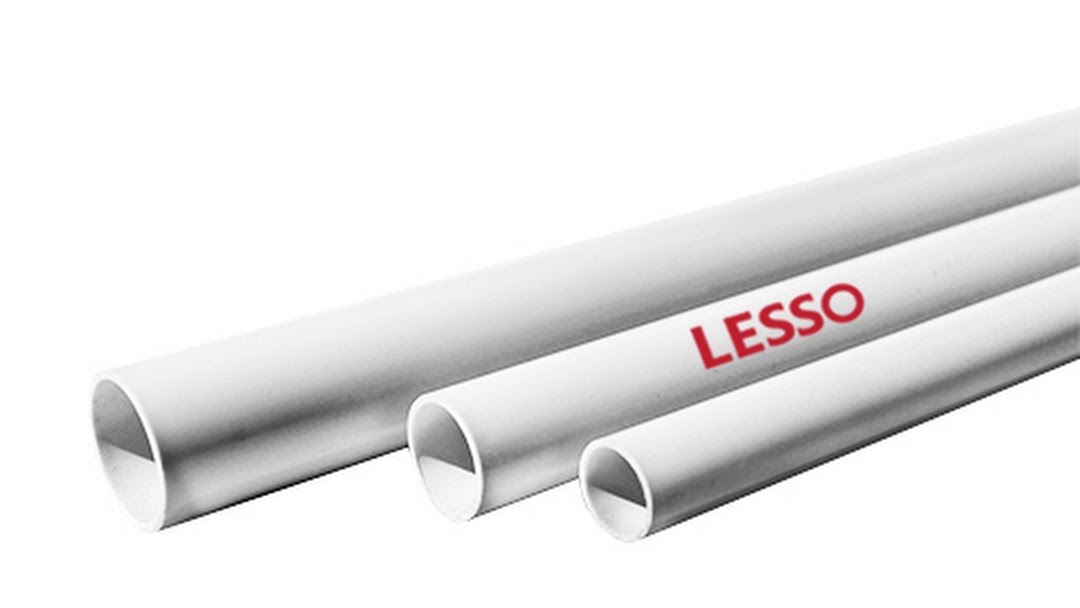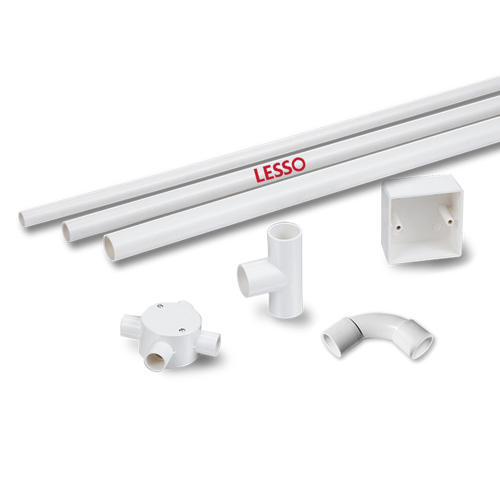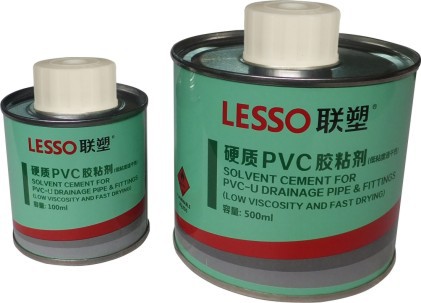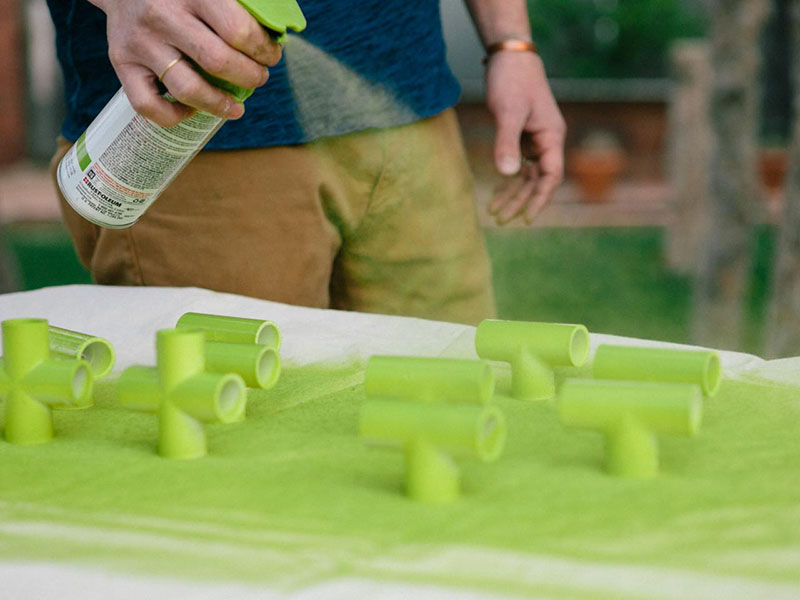Although working with plastic pipes is easy, you still need plastic pipe guides to get the best results. As PVC has replaced most alternatives that have existed for years, you must learn its basics as you may need to use it one time in your life.

There are several benefits that the industry has seen after shifting to using these plastic pipes for home improvement. PVC pipes are widely used for indoor water supply projects. If you are looking for water supply pipes, you can find more aboutPipe products from LESSO
Working with PVC requires the use of various chemicals. For instance, you need chemicals like adhesives and lubricants to join pipes, clean or paint them. As it is when handling chemicals, your safety comes first. Therefore, you need to take precautions before you start working. Here are ways to protect your body parts.
You must ensure eye safety when working with PVC pipes. Several things may happen, such as the splashing of the chemicals or spillages. Or, you may forget and touch your face or eyes with chemical-stained hands. These are instances that may cause a lot of harm to your body.
Vapors from chemicals can have a lot of impact on your body. Even without touching the substances, you must protect your mouth and respiratory system. Wearing a mask will help prevent the inhalation of these chemicals into your system, potentially harming the body.
Wearing protective equipment on your hands works perfectly in keeping your eyes and mouth safe. You can wear gloves to reduce direct contact with chemicals. Rubbing any part of your body becomes more comfortable also by removing the gloves. That reduces unnecessary interaction with harmful substances.
Whether you are DIY or working withPVC pipesas professionals, it is necessary to learn how to cut pipes using various tools and methods. It will help save the costs of taking every piece you would like to cut to the hardware. The following step-by-step PVC pipe cutting guide has all you need to know about cutting pipes.
Bending PVC pipes is a simple procedure. You first need to cut the pipe to the desired size. Then go ahead and tape one end. Go ahead and pour enough sand to almost fill the pipe and tape the other end too. That will ensure you can heat the pipe without any kinks.
Go ahead and heat the pipe thoroughly and bend it to the desired shapes using gloved hands. Pour out the sand after getting the desired shape. The best thing about this technique is that you can get any shape you want.
Connecting PVC pipes is a simple process that you can do in a few minutes. The main task is to ensure that you have the pieces you require and cut them to desired lengths. After that, here are the steps you need to follow.

You should start by assembling all the pieces that you need to join. You need to consider the number of parts you require to get the desired length and design. Also, you need to determine the types of joints you need to make. There are several options here, but the most common are double L, splices, and 90-degree joints.
Any debris on the joining surfaces may affect the strength of the bond you will create. Therefore, there is a need to ensure you wipe the joining ends. Most people forget to clean the inside of the connecting piece, which can cause weak bonds and leakages.
You need the correct measurements before start gluing. Start by finding out the ID of the pipe. A tape measure is needed here. Start measuring from one inside wall of the pipe to another.
Next, you should measure the outer diameter to determine how sturdy it can be for big projects. To do this, wrap a string around the pipe and mark where the end overlaps. Remove the string, lay it on a flat surface, and measure the length from the starting point to the target.
As the pipe must fit into the socket, there is a need to measure how deep it should go. The length of the pipe that will enter the socket depends on the type of pipe and project.
To glue a PVC pipe, the first step is to try a dry fit on the pieces you would like to join. Primarily, that means you try to fit the pipes without applying the glue. It will help you to mark the points at which you need to apply the glue. This step is essential as the glue sets quickly, and it may be difficult to correct any errors. Ensure that you have all the points appropriately marked.

Next, you need to start joining every joint by applying PVC cement on the surfaces. Speed and accuracy are vital things in this step. You need to ensure you apply the glue quickly and finish up with one joint before moving to the next. If you move slowly, you risk getting weak joints if the glue dries up on the surface before you join it with another.
Next, you need to hold up the joint together for a few seconds. You can wipe excess glue using a rag to get a clean joint. Then, you should allow the joint to settle for at least 15 minutes. Avoid any stress or pressure on the joint during this time until the joint ultimately forms.
Sometimes, you may make a mistake that you would like to correct. Or, you may need to replace an old fixture with another. In all these circumstances, you need to unglue the surfaces and create a new bond. Here are the steps you should follow.
First, you need to get rid of the problematic joint. You can do this by cutting the pieces at the point they connect. A hacksaw will work correctly in giving the best cut.
The next step is ensuring that you get the fitting that meets your new needs. Here, you need to find a pipe that will fit the end that you didn't cut off. That will ensure that it matches and does not require any stress to fit appropriately.
Then, go ahead and apply the primer on the joining surfaces. You need to ensure that you have used the primer outside of one piece and inside the other. Then allow it a few minutes to dry. That will provide a good foundation for the glue you will apply in the next step.
Lastly, you can now glue the surfaces and make them stick together. Here, you need to ensure that you do it accurately by making sure the pipe reaches the socket before the glue dries. Also, avoid applying any pressure before the glue completely dries to form a strong bond.
Generally, the exterior color of PVC pipes has been extruded when they are manufactured from the factory, and there is no need for post-painting and coloring. But if you want to use PVC pipes art decoration, you could try to paint it yourself. Painting a PVC pipe makes it easy to get the desired color or the specific project you need. However, you do not just paint the surface without the necessary steps. There are ways you should do it to ensure you get the desired results.

The first step is to make sure that the pipe is clean. Since you have worked on the pipe, there may be chemicals, oil, and even dust on the surface. The paint will not stick well on such a surface. Other than wiping it, you need to wash it with water thoroughly.
It is worth noting that paint does not stick well on smooth surfaces. Therefore, you need to ensure that the surfaces are a bit rough. You can use fine-grain sandpaper to get the desired texture that is suitable for paints.
There are three options that you have when painting PVC surfaces. You can use a paint sprayer, which is by far the most effective method. Alternatively, you can apply a primer first before you start painting. If you choose not to prime the surface, buy specialized paints that stick to PVC surfaces quickly.
Also, you should remember that PVC pipes are not actually to be painted. Therefore, it may work for you or not. The best thing to do is trying it with a small part of the pipe. After that, you can paint the whole surface if it looks like it will work.
It is necessary to ensure that you clean a PVC pipe before installation. It is vital if you are planning to install it in damp places where there is a risk of molding. It can be difficult to clean after setting the plumbing system. Here are the steps you need to undertake earlier:
Working withPVC pipescan be a tricky experience if you do not have any background knowledge. However, that is easier now after reading the steps in this PVC pipe guide. You can do several things from cutting, gluing, ungluing, and cleaning of pipes.
TOP